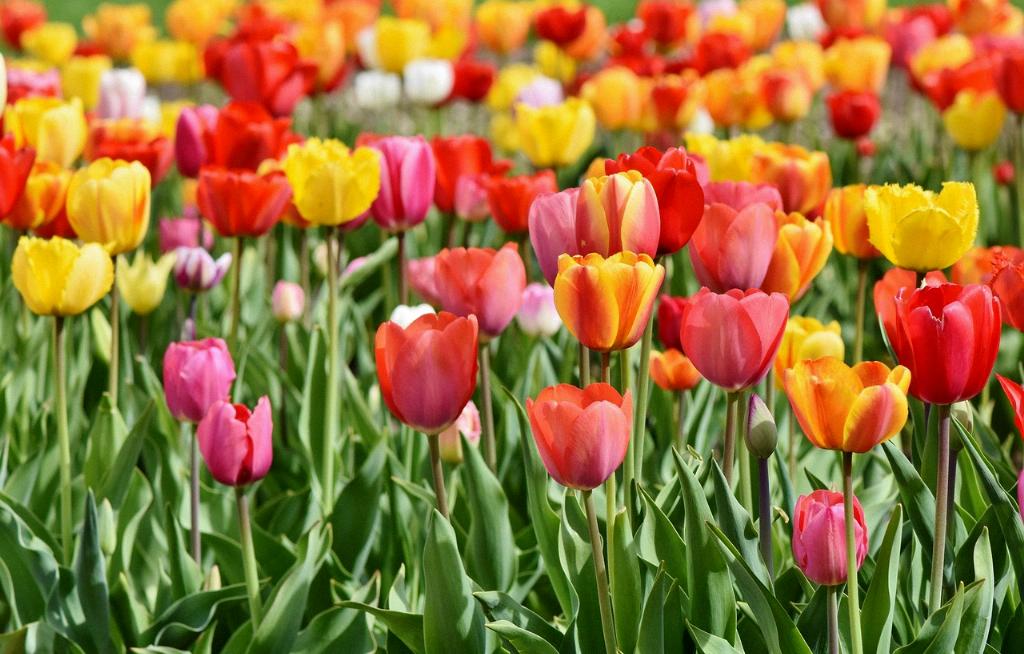Placing tulip bulbs in the ground at the right time is fundamental to ensure a successful and vibrant display of these beautiful flowers in the spring. The perfect season to plant tulip bulbs is during the fall. This is the time when the Earth begins to cool down from the intense heat of the summer months, creating the ideal conditions for the bulbs to establish themselves and prepare for their spectacular bloom.
Climate Considerations
The timing of planting tulip bulbs can vary slightly depending on the climate of your region. In colder climates, such as zones 3 to 5, it is advisable to plant the bulbs as early as September, allowing them ample time to settle in before winter arrives. For areas with transitional climates, like zones 6 to 7, October is usually the optimal month for planting. In warmer climates, zones 8 to 9, you can wait until November or December to plant your tulip bulbs.
Soil Preparation
Before you start planting your tulip bulbs, it is crucial to prepare the soil adequately. Make sure the soil is well-drained to prevent the bulbs from rotting. Loosen the soil to a depth of about 12 inches and mix in some organic matter, such as compost, to provide the bulbs with essential nutrients for healthy growth.
Choosing the Right Location
When selecting a spot to plant your tulip bulbs, opt for an area that receives full sun or at least partial shade. Tulips thrive in sunlight and need a minimum of six hours of direct sunlight daily to flourish. Additionally, ensure that the location has good air circulation to prevent the bulbs from becoming too moist, which can lead to disease.
Planting Depth
The depth at which you plant your tulip bulbs is critical to their success. Dig a hole that is roughly three times deeper than the size of the bulb. For example, if your bulb is two inches tall, the planting hole should be around six inches deep. Place the bulb with the pointed end facing upwards and cover it with soil, gently patting it down to remove any air pockets.
Spacing Guidelines
When planting multiple tulip bulbs, it is essential to space them adequately to allow room for growth and prevent overcrowding. Space the bulbs at least three to six inches apart, depending on the variety of tulips you are planting. This will ensure that each bulb has sufficient space to develop healthy roots and stems.
Watering Routine
After planting your tulip bulbs, give them a thorough watering to help them settle into their new environment. Be cautious not to overwater, as this can cause the bulbs to rot. Throughout the fall and winter, monitor the soil moisture levels, ensuring it remains slightly moist but not waterlogged.
Winter Care
During the winter months, protect your tulip bulbs from extreme cold by adding a layer of mulch or straw over the planting area. This will help insulate the bulbs and prevent them from freezing. In regions with harsh winters, consider covering the planting area with burlap to shield the bulbs from frost.
Spring Emergence
As the temperatures begin to warm up in spring, you will start to see the first green shoots of your tulips emerging from the soil. Resist the temptation to remove the mulch too early, as it can protect the tender shoots from late frosts. Once the danger of frost has passed, you can remove the mulch to allow the tulips to bask in the sunlight.
Fertilizing Schedule
After the tulips have finished blooming, it is vital to feed them with a balanced fertilizer to replenish the nutrients in the soil. Use a slow-release fertilizer or organic compost to provide the bulbs with the necessary nutrients for the following growing season. Avoid high-nitrogen fertilizers, as they can promote lush foliage at the expense of flower production.
Aftercare Tips
Once the tulips have completed their blooming cycle, deadhead the faded flowers to prevent the plant from expending energy on seed production. Allow the foliage to wither and turn yellow naturally before removing it, as this process helps the bulb store energy for the next year’s bloom. With proper care and attention, your tulips will continue to grace your garden with their beauty year after year.

